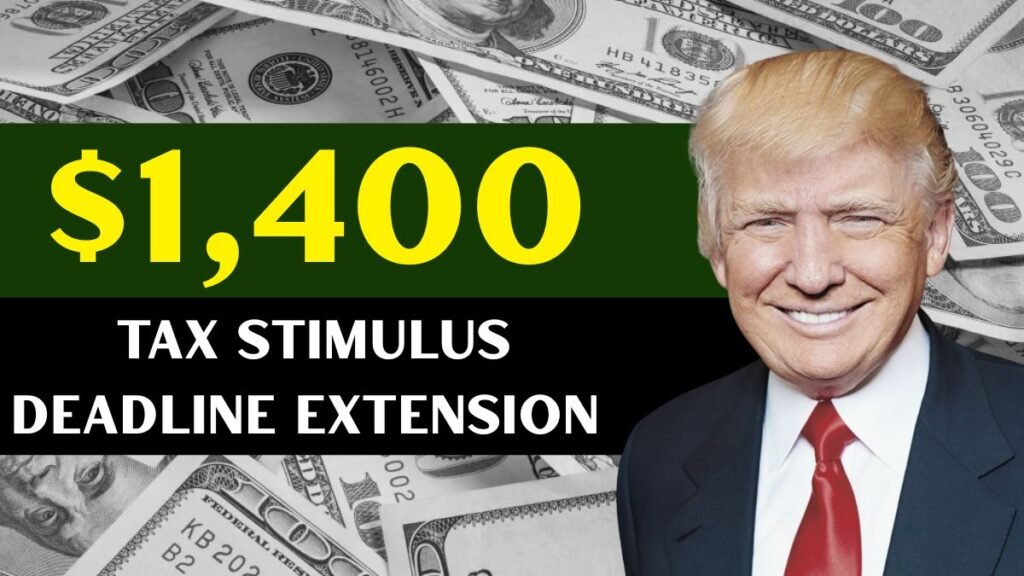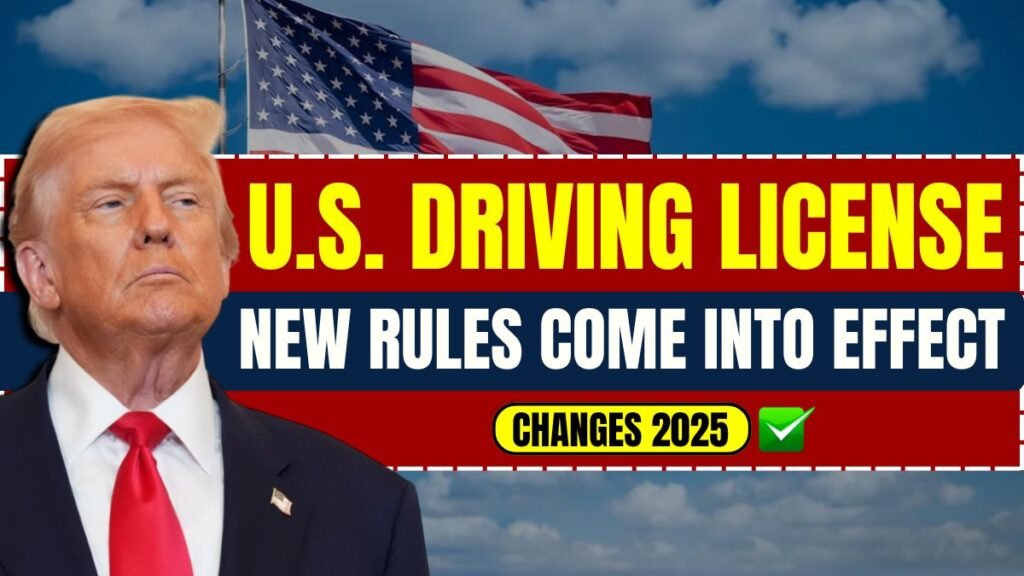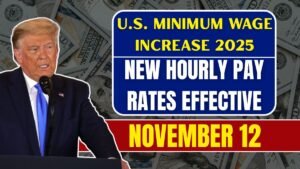The long-standing debate over the minimum wage in the United States is finally moving toward a major change. After nearly fifteen years, American workers are finally receiving the raise they’ve longed for. The federal minimum wage increase officially takes effect on November 12, 2025. This is the first time the federal minimum wage has been changed since 2009. The government says this move will help provide relief to workers in the face of rising living costs, stabilize incomes, and strengthen local economies.
Table of Contents
Federal Wage Change: Major Relief for Workers
The minimum wage is being increased from $7.25 per hour to $9.50 per hour starting in October 2025. This increase ends one of the longest wage freezes in modern American history. A long-term plan has also been developed that will gradually increase the federal minimum wage to $15 per hour by 2030. This will be automatically adjusted annually based on inflation and productivity.
For full-time employees working 40 hours a week, this increase will provide an additional income of approximately $160 per month, or about $2,000 annually. For lower-income groups, this increase is a significant relief.
Federal Pay Rates: Impact of New Categories

The table below shows the changes in federal pay rates across different categories:
| Category | Previous Federal Rate | New Federal Rate (Oct 2025) | Target by 2030 |
|---|---|---|---|
| General Workers | $7.25/hour | $9.50/hour | $15/hour |
| Tipped Workers | $2.13/hour | $5.50/hour | TBD |
| Youth Training Wage | $4.25/hour | $8.00/hour | $10/hour |
According to the U.S. Department of Labor (DOL), approximately 27 million workers in the country still earn less than $15 per hour. The new rates will not only increase the incomes of these workers but will also impact other pay categories, as businesses typically revise their entire pay structure to maintain parity.
The Role of State Governments: Many States Increase Pay Rates
The federal wage sets minimums, but many states are implementing even higher rates. More than half of the states have announced new pay rates that will take effect in November 2025:
| State | Previous Rate | New Rate (Nov 2025) | Notes |
|---|---|---|---|
| California | $16.00 | $17.50 | Higher in some cities |
| New York | $16.00 | $17.00 (NYC, LI, Westchester) | Varies by region |
| Florida | $13.00 | $14.00 | On track for $15 by 2026 |
| Washington | $16.28 | $17.25 | Among the highest in the country |
| Texas | $7.25 | $9.50 | Matching federal rate for the first time |
| Oregon / Illinois / Colorado | $13.50–$15.50 | $14.00–$16.50 | Annual inflation-linked increases |
Large cities like Seattle, San Francisco, and Washington, D.C., already pay more than $18 per hour. This clearly demonstrates that local policies often outpace federal changes.
Tip-Based and Young Workers Will Get Big Increases
Tip-dependent workers, such as restaurant servers and bartenders, will benefit the most from this change. Their base pay, which had been frozen at $2.13 per hour for nearly 30 years, is now increasing to $5.50 per hour. However, employers must still ensure that total earnings, including tips, do not fall below the federal minimum rate of $9.50 per hour.
For young people under 20, the initial 90-day training wage is being increased from $4.25 to $8.00 per hour, after which they will transition to the regular federal rate. This change is crucial for young and entry-level workers whose income is often uncertain.
Why was this change necessary?
In the past few years, the US has seen significant increases in inflation, rent, healthcare, and food prices. Despite consistent improvements in productivity, wage growth has remained slow. Food prices have increased by approximately 20% since 2021. In this context, raising the minimum wage is considered an important step toward restoring balance.
Supporters believe that:
- Consumer spending will increase, which will also benefit small businesses.
- Better pay for employees will reduce attrition.
- Families will find it easier to meet their essential needs.
Critics, however, argue that
- Increased payroll costs may be difficult for small businesses to handle.
- Prices may rise in some industries.
- Automation and machine use may increase, affecting some jobs.
Many states have offered tax credits and temporary financial assistance to help small businesses adapt to this change.
Important steps for employers
Employers must complete the following steps by November 12, 2025:
- Update their payroll systems to reflect the new pay rates.
- Post new FLSA minimum wage posters in workplaces.
- Maintain employee time and wage records accurately.
Failure to comply with these regulations could result in back pay, financial penalties, or legal action.
A New Chapter for American Workers
This 2025 minimum wage reform is a promising step for millions of American workers. Economists are calling it a “national experiment” of sorts, aiming to strike a balance between fair wages and sustainable employment. If this policy succeeds, America could experience stronger consumer demand, stable communities, and improved economic security for families in the years to come.
For many workers, this change is not just a number but an acknowledgment of their hard work and contributions to the economy.
FAQs
Q. When will the new state minimum wage rates take effect?
A. The updated rates will begin in November 2025.
Q. Do all states follow the same minimum wage?
A. No. Each state sets its own rate, which can be higher than the federal minimum wage.
Q. Why are some states increasing wages more than others?
A. Cost of living, local laws, and regional economic policies influence wage decisions.
Q. Will cities within a state have different wage rates?
A. Yes. Several cities, especially in California and Washington, have higher local minimum wages.
Q. Does the federal minimum wage change affect all workers?
A. It applies nationwide, but workers in states with higher wages will continue to follow their state’s rate.
















